24 October 2025
6 min read
Carnivorous plants explained: Venus flytraps, pitcher plants & more
Discover the secrets of these amazing flesh-eating plants.

What are carnivorous plants?
The majority of plants are able to get the nutrients they need, like nitrogen, from the soil by absorbing them through their roots.
However, there are some environments where the soil has very few of these nutrients that are crucial for plant growth.
In response, carnivorous plants have evolved ways to trap and digest other living things, often insects, to get the nutrients that are in short supply.
These meat-eating plants use sticky leaves, snap traps and pitfalls to capture insects and other prey.
Here are some of the most well known carnivorous plants:
Venus flytraps
Probably the most famous carnivorous plant of them all, Venus flytraps (Dionaea muscipula) snap shut around insects, spiders and other animals that move over their specially modified trap leaves.
How do venus flytraps catch their prey?
The inner leaves of Venus flytraps are coloured red, which may help attract insect prey.
Hairs on the surface of the leaves count as they are disturbed by potential prey and will only snap closed when two are touched, or one is touched twice, in a short space of time.
The lobes of the leaf trap close by rapidly changing shape as fluid is pumped into them, although scientists don't fully understand yet how this process works.
Once closed, the Venus flytrap will only begin releasing digestive enzymes if the hairs are triggered several more times.
This is to ensure the flytrap only digests prey big enough to be worth the energy expenditure.
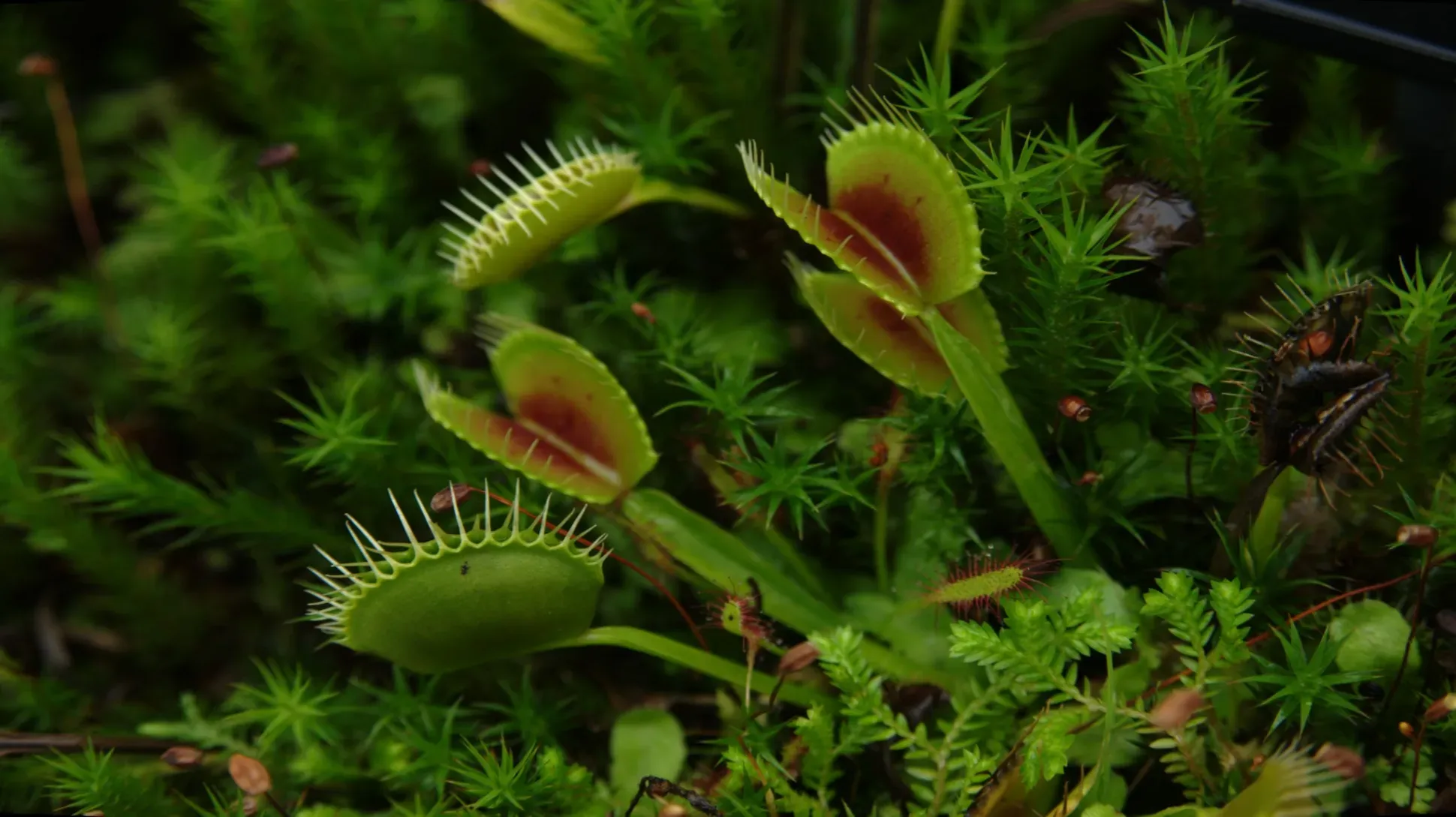
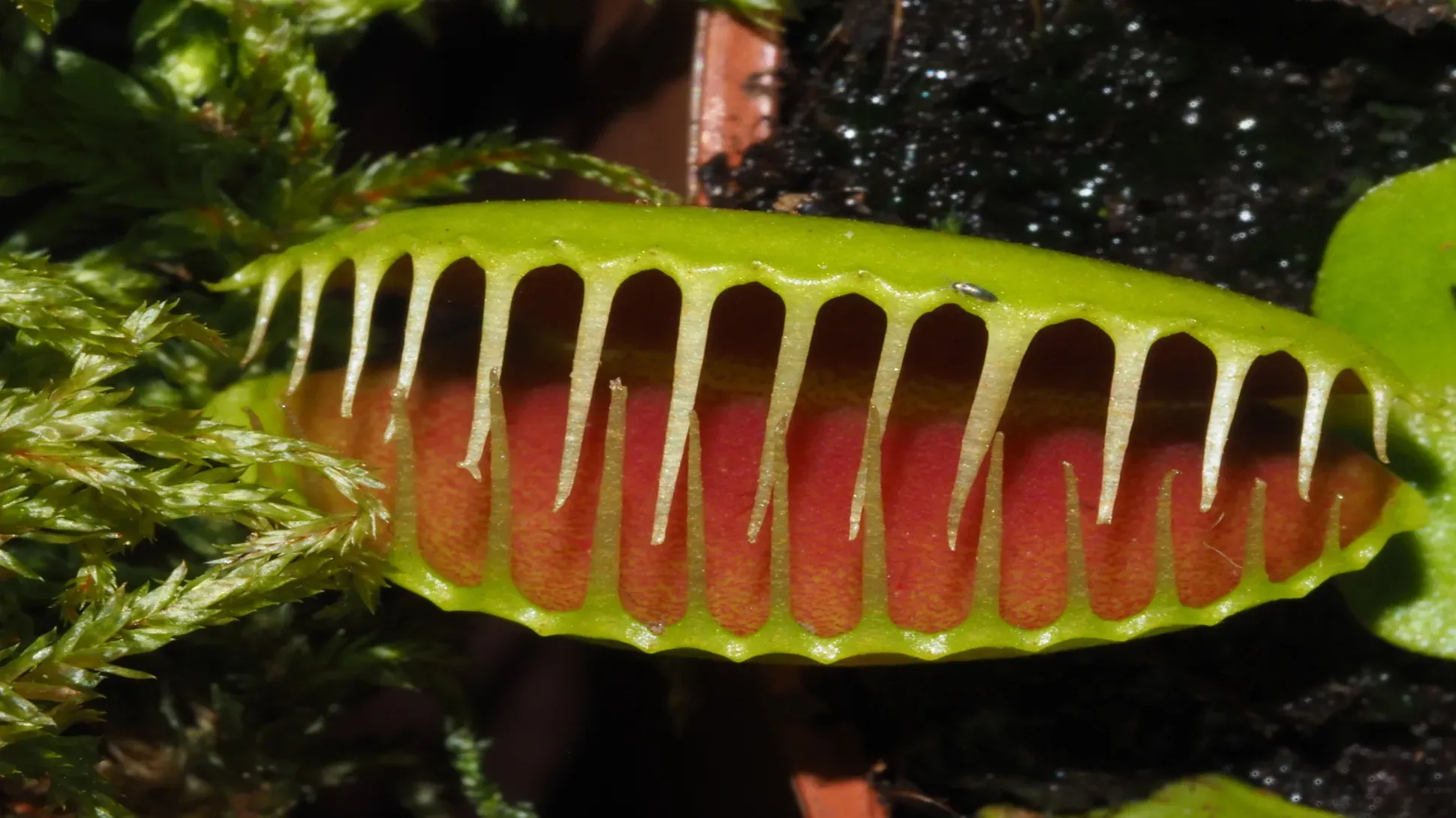
Where do Venus flytraps live?
While Venus flytraps are now grown all over the world to be sold in shops and garden centres, Venus flytraps are only found in the wild in a very specific area of the world.
The nutrient poor wetlands found on the east coast of North and South Carolina in the USA are the only known native home for the Venus flytrap.
The carnivorous snap traps thrive in these environments as the yearly forest fires that burn through the regions destroy other plants that might block out their sunlight.
Unfortunately, the home of the Venus flytrap is under threat.
Climate change, farming and road building are massively impacting the wetlands, resulting in the Venus flytrap now being listed as Vulnerable.
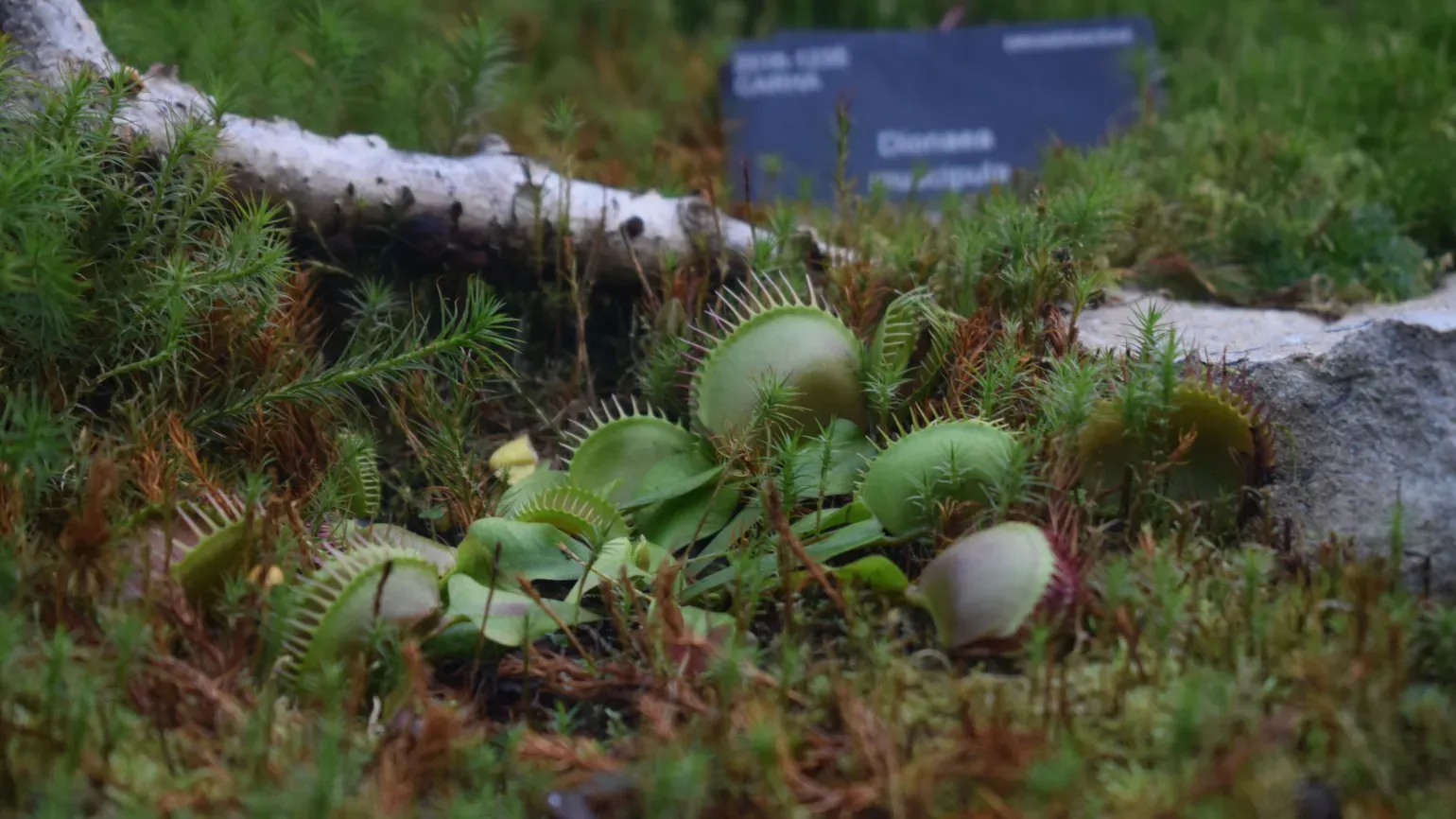
Pitcher plants
Whether dangling from the branches of rainforest trees, or sprouting up in clusters from waterlogged marshes and swamps, pitcher plants are found in both tropical and temperate environments.
Where do pitcher plants live?
There are two major groups of pitcher plants: the Nepenthaceae family and the Sarraceniaceae family.
Nepenthaceae, sometimes known as tropical pitcher plants or Nepenthes, are found across the islands of Southeast Asia, including Malaysia, Indonesia and the Philippines. There are also species only found on Madagascar and Australia.
These tropical pitchers plants form long vines which often grow up trees or other plants, with the traps both dangling down from up high and growing on the ground.
Sarraceniaceae are found in both North and South America. These pitcher plants grow in clusters, often in swamps or other wetlands. This group includes species like the purple pitcher plant and the California cobra lily.
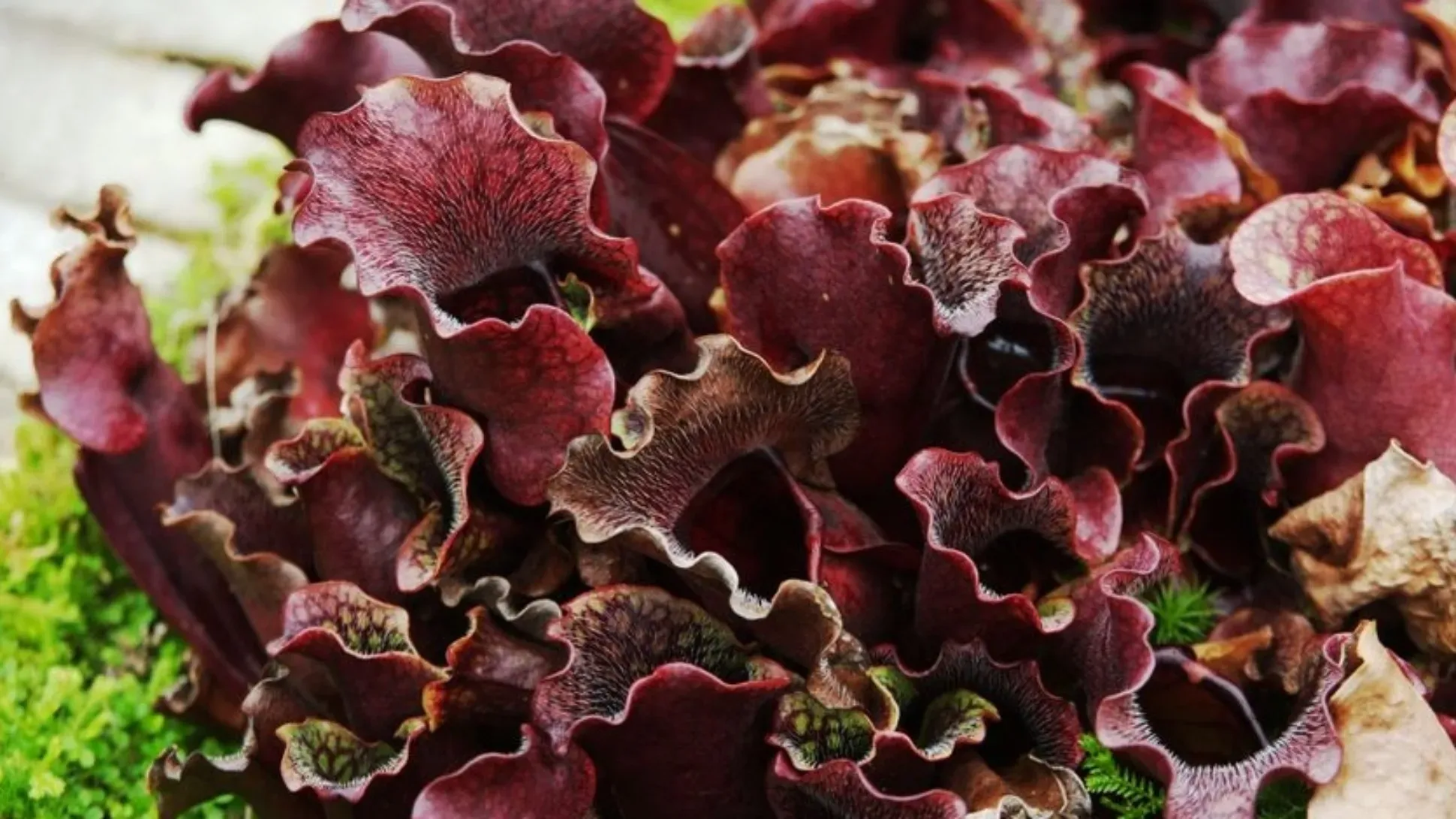
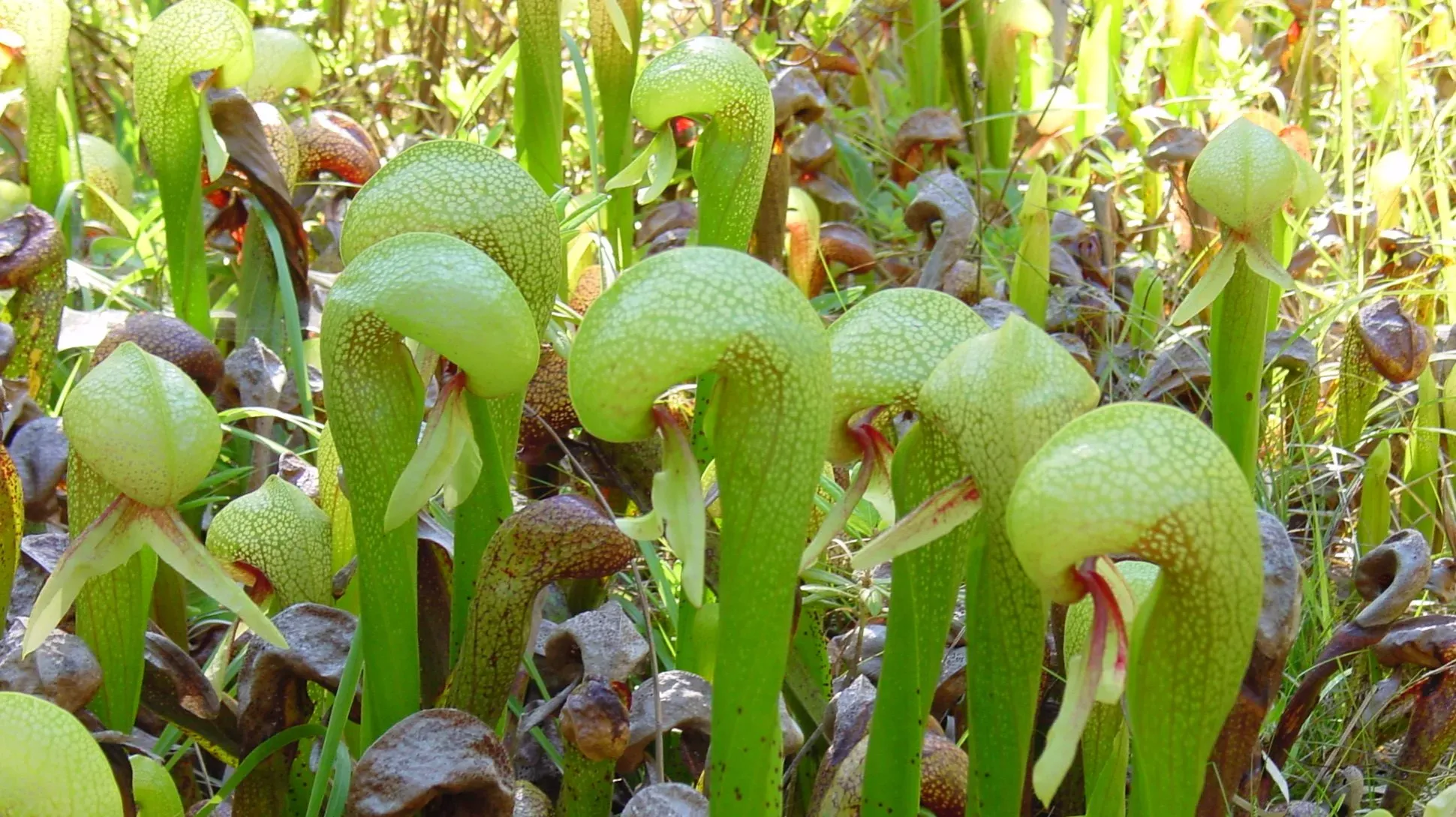
How do pitcher plants catch their food?
Pitcher plant traps are specially modified leaves that can contain fluid at the bottom. This fluid traps any prey that fall in, then digests them using either bacteria or enzymes.
The rims of pitcher plant traps are slippery, which causes insects to slip into the watery depths or a tightly constricting tube below. The interior walls of the trap are often adapted to keep prey trapped inside, like with downward pointing hairs or special folds.
The traps are often covered by a lid that can help attract prey towards the trap, using red colours, sugary nectar or sweet scents.
Some pitchers don’t feed on living insects though. Some species, like Nepenthes lowii feeds on the poop of a tree shrew that uses it like a toilet!

Are there pitcher plants in Australia?
Along with several species of Nepenthes, Australia is home to a unique pitcher species.
The Australian pitcher plant (Cephalotus follicularis) is only found in the wild in a small region in Western Australia, in damp sandy soils near rivers and swamps.
The lid of the pitcher not only stops rainwater diluting the digestive enzymes, but also has transparent windows. These windows confuse the trapped prey to reduce the chance of them escaping.
Despite looking very similar to the other pitcher plants, the Australian pitcher plant is completely unrelated to other pitchers. In fact, it’s more closely related to broccoli or beans!
You can see Australian pitcher plants growing in the Temperate Carnivorous plants section of the Princess of Wales Conservatory at Kew Gardens.
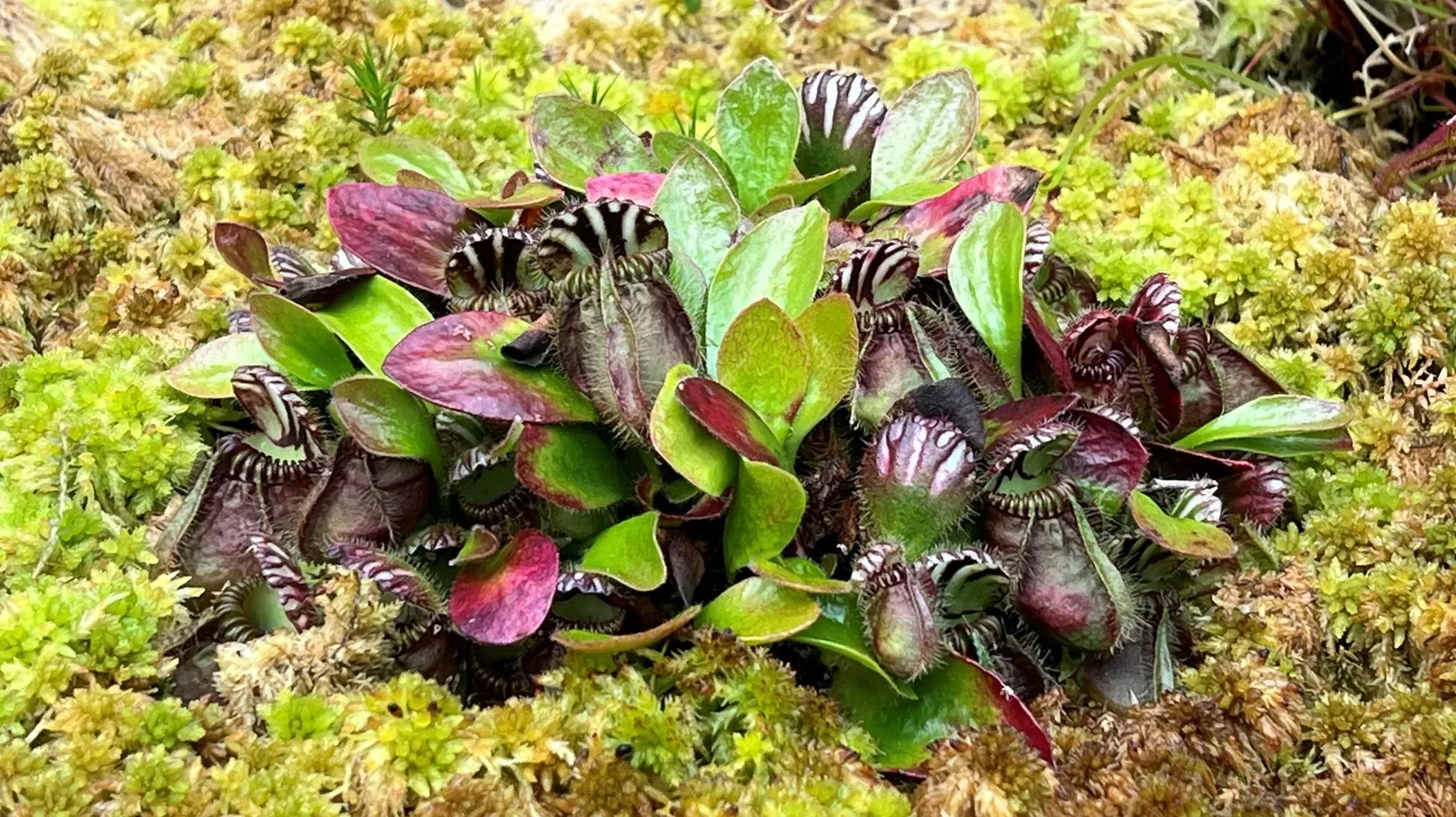
Sundew plants
Some carnivorous plants use sticky substances to trap and consume insects and other arthropods, like the gluey tendrils of sundew plants.
How do sundew plants trap their prey?
Sundews, also known as Drosera, are covered in fine tentacles tipped with sticky mucus. Scientists think that insects are attracted to these leaves as they resemble droplets of nectar. When the insects land on them, they become stuck.
When the bugs struggle to escape, special tentacles respond to the movement and warp around the unfortunate invertebrate.
Once enveloped in sticky slime, the insect suffocates and dies. Then digestive enzymes break them down, allowing the plant to absorb the nutrients it needs to thrive.
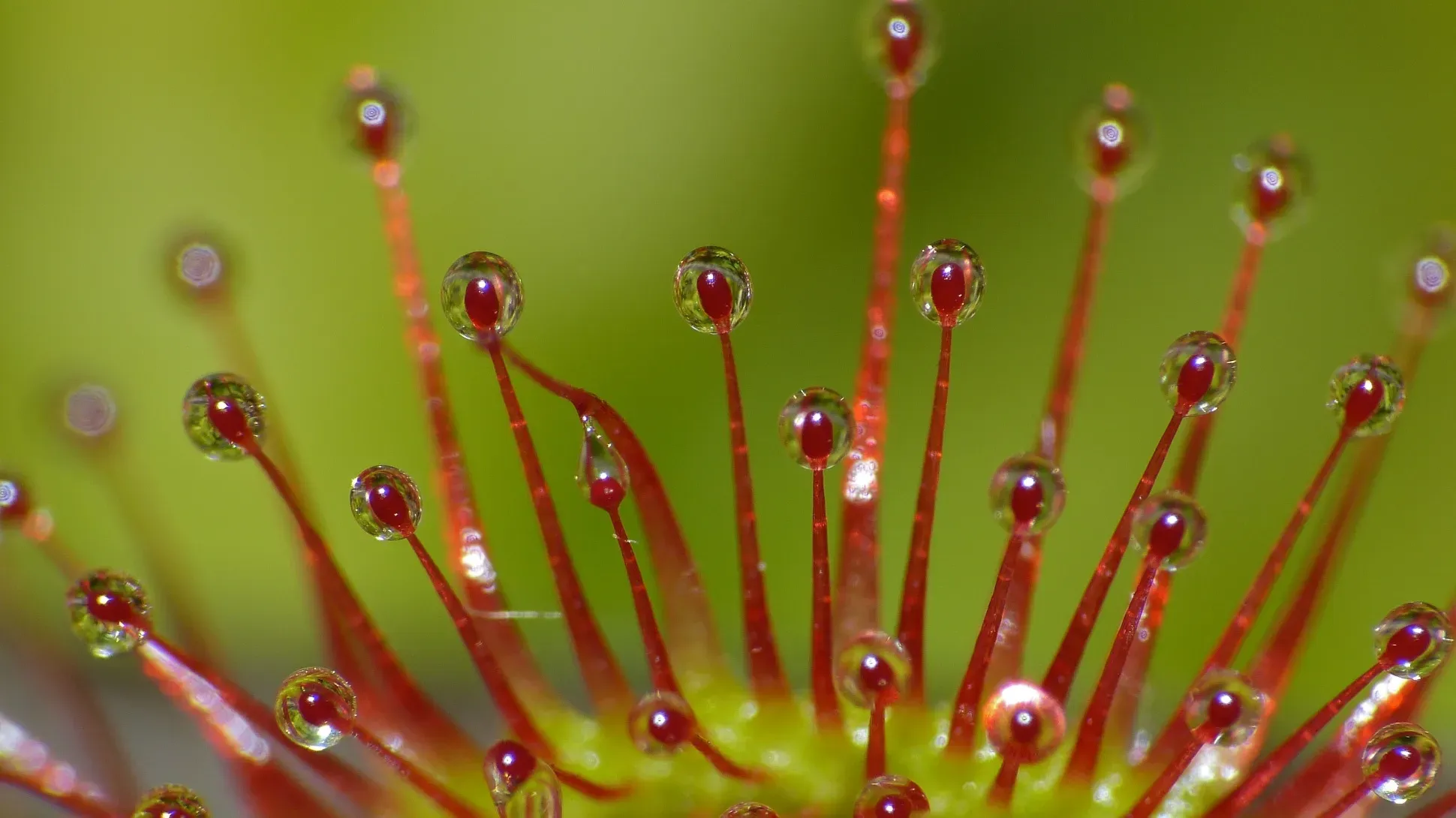
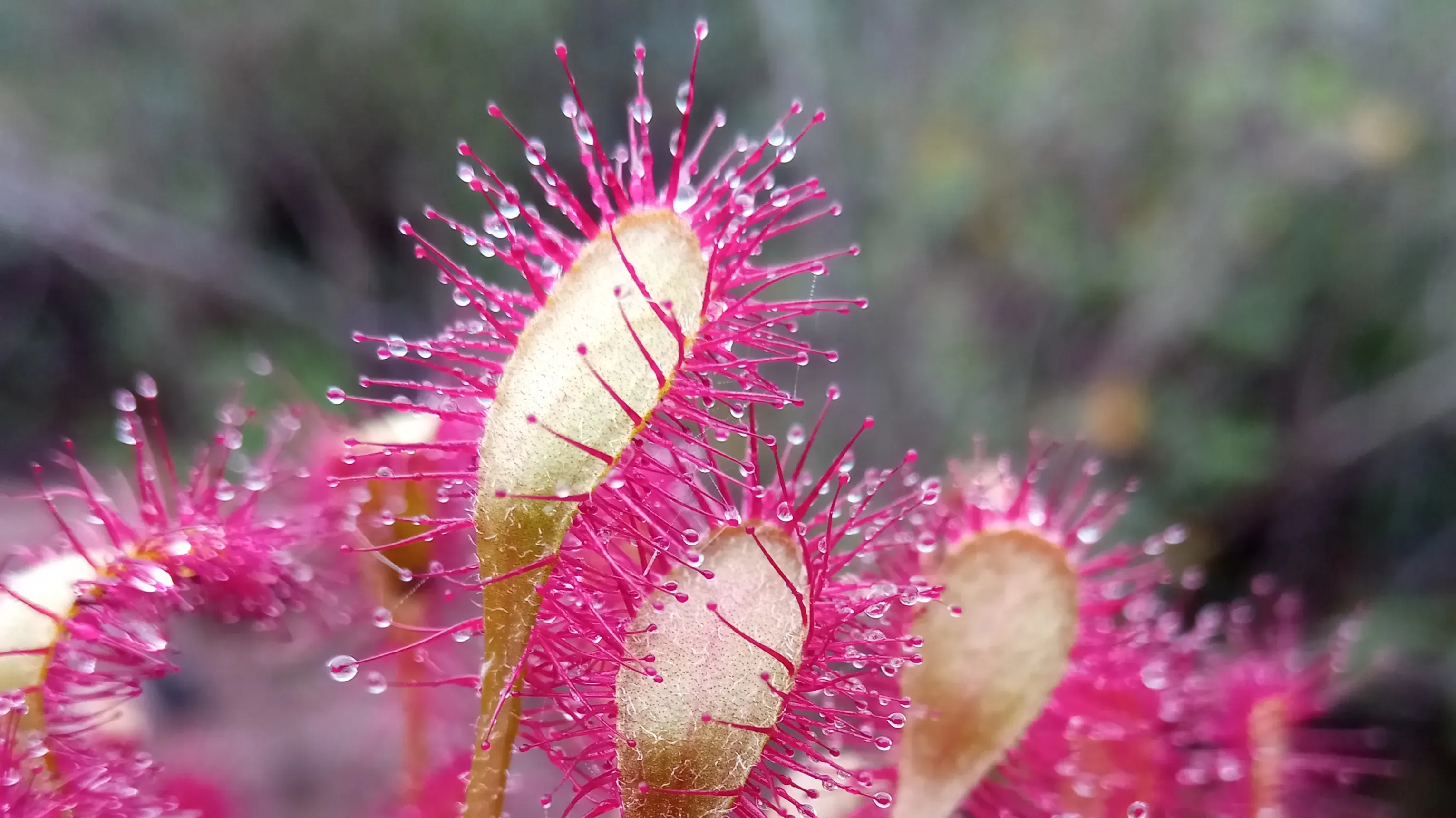
Did you know?
As if sundews weren’t cool enough, some species of Drosera also reproduce in an unusual way!
In the winter months, they produce tiny vegetative bodies known as gemmae. These are special detachable leaves with a vegetative bud.
The gemmae are so tightly packed together, they become like a coiled spring. If something disturbs them, like a raindrop, the gemmae are thrown up to a metre from the parent plant, where they can start to grow into a new sundew.
Aquatic carnivorous plants
Flesh-eating plants are not just found on land: there’s also hungry plants to be found underwater.
There are over 300 species of bladderwort, plants in the genus Utricularia, found everywhere from the freshwater fens of the UK to the tropical rainforests of Brazil.
Bladderworts are usually made up of a network of underground or submerged branching stems covered in structures known as bladder traps, which capture prey beneath the surface of boggy soil or suspended in water.

Utricularia bladders pump water out to create a lower water pressure inside. When suitable prey like water fleas or mosquito larvae swim by, they brush trigger hairs which cause the bladder valve to open.
Due to the pressure difference, both water and prey are sucked into the bladder and the valve snaps shut behind.
The whole process takes only 0.02 seconds, or about the average time it takes for a human to blink.
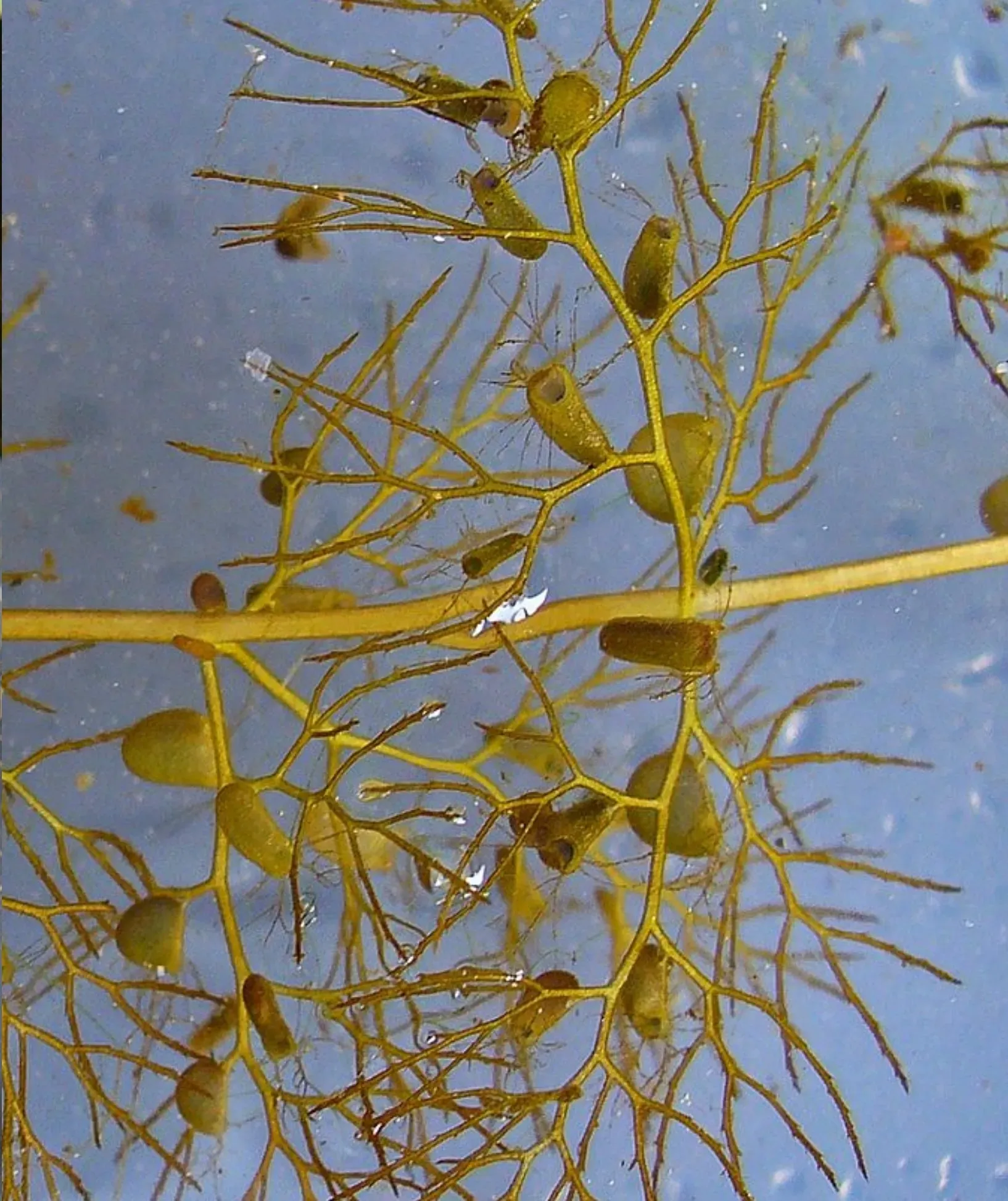
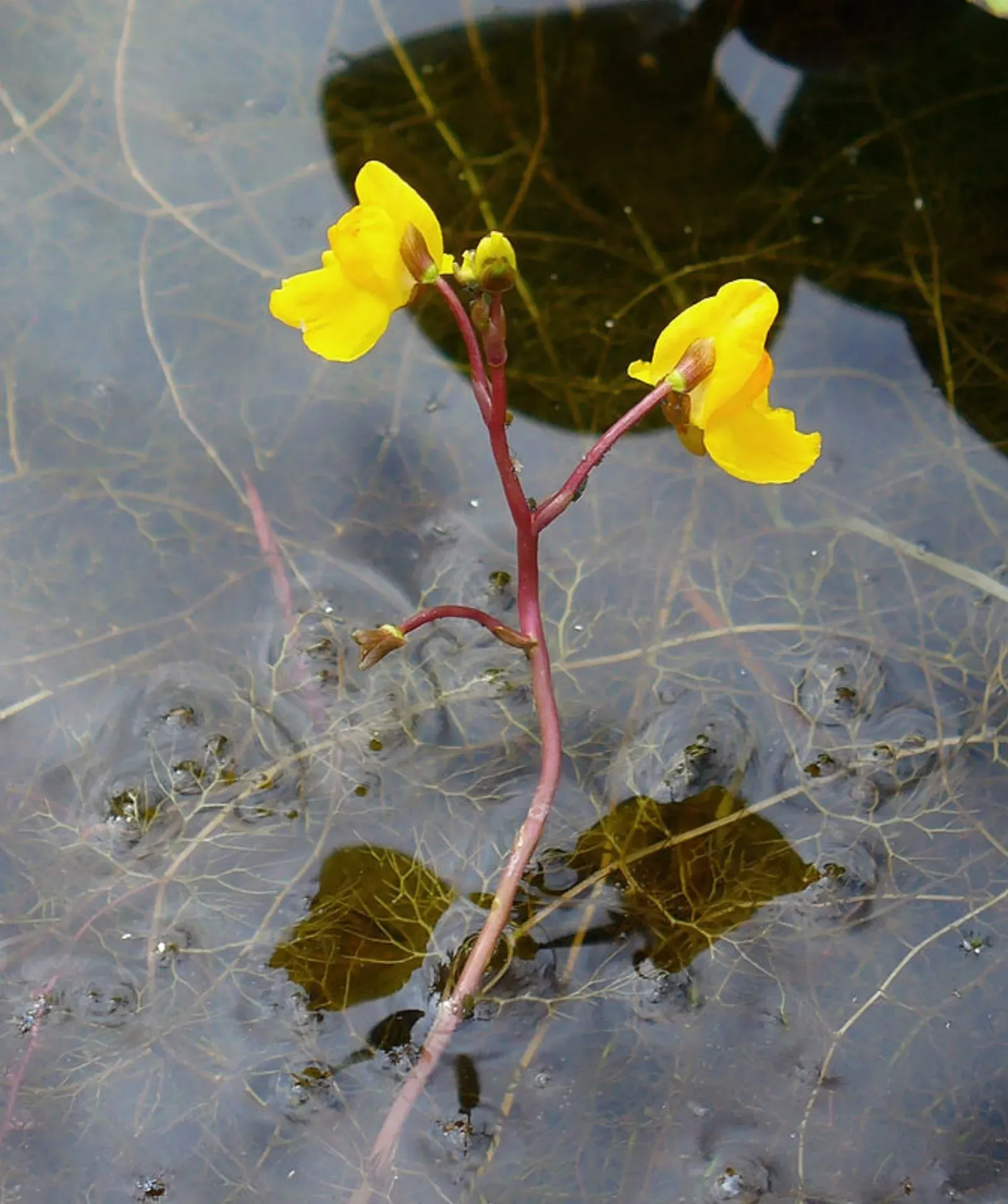
Finding carnivores at Kew
While some of our carnivorous plants grow behind the scenes in our Tropical Nursery, you can meet some flesh-eating friends next time you visit our Princess of Wales Conservatory.
Many can be found in two rooms dedicated to temperate and tropical Carnivorous Plants.

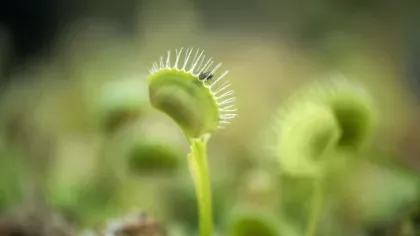
.jpg98e7.webp?itok=OEXY4ft-)
